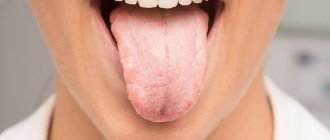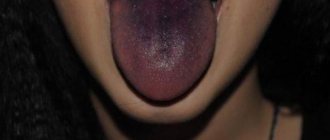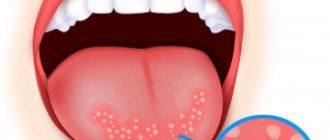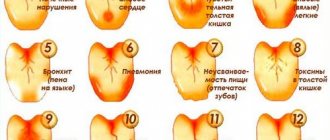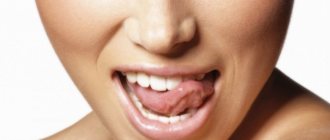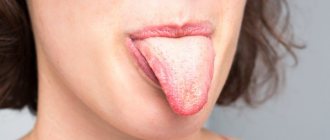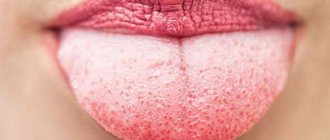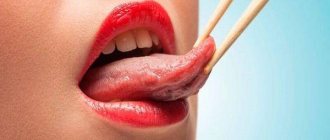Smoker's plaque is a pigmented plaque that forms on the enamel of the teeth of smokers. Characterized by a dense, viscous structure, it penetrates deeply into tooth enamel and colors it in a characteristic yellow, brown or black color. Accumulating on the neck of the tooth and in hard-to-reach places not involved in the chewing process, plaque from smoking is difficult to remove and provokes the occurrence of dental diseases.
How does smoking affect teeth?
Smoking is a bad habit that negatively affects the overall condition of the oral cavity and dental health. When regularly exposed to tobacco smoke, they acquire a yellow coating and look unattractive. The reason for this is the harmful substances that are part of the smoke - ammonia, tar, nicotine, tar, phenol-formaldehyde, etc. There are about 3,000 substances in total, some of which settle on the enamel and form a characteristic plaque from cigarettes.
Smokers who take good care of their mouths and brush their teeth thoroughly have little plaque buildup. But they also cannot get rid of old deposits that form in hard-to-reach places. Sooner or later, they cease to be just a cosmetic problem and become the cause of dental pathologies.
Absolutely every smoker experiences xerostomia - a kind of dry mouth, indicating an insufficient amount of saliva, which causes a disruption in the natural protective functions of the oral cavity. The result is that plaque very quickly forms on the surface of the teeth, which serves as a breeding ground for pathogenic microorganisms, the waste products of which provoke the appearance of caries and gingivitis.
Signs of a smoker's plaque
Signs of this unpleasant phenomenon are visible to the naked eye. If desired, every smoker can detect them. To do this, just carefully examine your mouth and teeth in front of the mirror. In this case, the following symptoms of the problem may be observed.
- Visible change in enamel color towards darkening.
- The presence of yellow, brown or black plaque on the neck of the tooth (at the base) or on the inside of the dentition.
- Uncharacteristic color of gums, which look a little “overdried.”
After detecting these signs, all that remains is to exhale sharply into your palm to feel the bad breath - the eternal companion of heavy smokers.
How to get rid of plaque on teeth from smoking?
Brown plaque on the teeth, a characteristic yellow coating on the tongue, bad breath - these are visible aesthetic problems that every smoker faces. To eliminate them, you need to seek help from a dentist, who will perform professional teeth cleaning and help you get rid of the unpleasant consequences of smoking.
Professional teeth cleaning from plaque
At the Dental Center on Shabolovka, professional teeth cleaning is carried out to effectively remove smoker’s plaque. To do this, one of the modern methods of teeth cleaning can be used.
- Mechanical cleaning
- the procedure is carried out manually, using ultrasound or Air-Flow and is reduced to the mechanical destruction of plaque and stone. - Chemical cleaning
is a procedure that involves the application of special dental solutions that soften and break down plaque and tartar, allowing them to be removed from the surface of the teeth. - A combined method
is a procedure that includes chemical and mechanical cleaning of teeth, thanks to which you can achieve the best visible result.
Once the smoker's plaque has been removed, the dentist will grind and polish the surface of the teeth, which will significantly reduce the rate at which the problem reappears.
Important to remember!
The popular teeth whitening procedure is carried out only after professional cleaning.
Removing smoker's plaque at home
Most smokers are confident that they can get rid of yellow plaque on their teeth without visiting a dentist. To do this, it is enough to purchase one of the “newfangled” whitening products or a special toothpaste. At the same time, they completely do not take into account the peculiarities of the use of these funds and their conditionally positive effect.
The problem is that all home teeth whitening products are effective only in cases of minor plaque and have no effect on old deposits, especially if they are located in hard-to-reach places. Ideally, they should be used after professional cleaning to maintain the achieved result. This must be done with great care, since the active components and abrasive substances they contain have a destructive effect on tooth enamel.
Removing plaque using folk remedies
Traditional medicine does not stand aside from dental problems. And to eliminate smoker’s plaque, she suggests using the well-known baking soda. To do this, you need to mix it with tooth powder or toothpaste and clean your teeth very thoroughly with this mixture. But it must be taken into account that this mixture can be used no more than 2 times a week, which is clearly not enough to remove cigarette stains. Otherwise, baking soda will gradually soften tooth enamel and negatively affect the condition of your gums. Often after such an “execution” there appears profuse bleeding of the gums and increased sensitivity of the enamel, which begins to react painfully to “cold” and “hot”.
There is also a safer method of traditional medicine that allows you to remove smoker’s plaque. To do this, immediately after smoking a cigarette, you need to chew a slice of lemon, green apple or strawberry for a long time. The fruit acids contained in these products will prevent plaque formation. But at the same time, they have a destructive effect on tooth enamel and cause its gradual thinning. And it is unlikely that any smoker will decide to undertake such a complex “ritual” after each cigarette smoked.
How to remove plaque from smoking on teeth and tongue
Smoking is certainly a bad habit that has a very negative effect on the condition of the oral cavity. The teeth of people who smoke acquire a yellow coating due to harmful substances contained in tobacco smoke, which settle on the teeth and create plaque. Smokers also often suffer from bad breath.
An unpleasant yellow plaque not only looks unsightly, but can also cause the development of diseases of the teeth, oral cavity, and the development of chronic diseases. For example, the accumulation of plaque can cause the formation of hard plaque at the roots - tartar. As a result, the accumulation of harmful bacteria can cause inflammation of the tooth roots and the development of caries.
Sometimes even dental care cannot save you from the unpleasant consequences of smoking.
Dentist advice
If you are one of the “smokers”, then we would like to give you some important dental recommendations to improve the health of your teeth and gums.
Dry lips (decreased salivation). Be sure to use hygienic lipstick or at least apply baby cream to your lips. It is especially important to apply this in winter and windy weather. This way you will moisturize your lips and restore their protective function.
The occurrence of gingivitis and stomatitis. Take vitamins A and E. Also use mouthwash after each cigarette and try to drink plenty of water.
Tooth enamel deteriorates. You will have to brush your teeth more often, use a more abrasive toothpaste and use special toothbrushes that have an increased number of bristles and are also impregnated with calcium carbonates to enhance the whitening effect.
How to remove plaque from smoking on teeth
Follow these tips:
- Visit your dental office regularly for checkups (at least twice a year),
- Brush your teeth regularly (two, or preferably three times a day),
- Choose suitable positions for you (with gentle whitening) and a toothbrush (medium hardness),
- Rinse your mouth after eating and smoking, use dental floss,
- Eat right: more vegetables, fruits, less carbohydrates and especially sweets,
- Carry out professional teeth cleaning in dentistry, teeth whitening if necessary,
- As additional factors, use traditional methods, but very carefully (consult your dentist).
How to remove plaque from smoking on your tongue
- Use a toothbrush to brush your tongue while brushing your teeth. The tongue accumulates plaque in the same way as teeth and gums.
- For preventive purposes, you can use mouthwashes with antibacterial properties.
- Rinsing with a decoction of chamomile, sage and oak, as well as chewing propolis, are useful.
- Rinsing with a soda solution has a good effect.
How to remove plaque from smoking at home
It is possible to remove plaque from smoking at home, however, this process is very lengthy and mistakes can cause chips on the enamel.
The most common advice is to whiten tooth enamel with soda, activated carbon and hydrogen peroxide.
Do we recommend such methods? No. The fact is that these methods must be used very carefully and only after diagnosing the condition of your enamel in the dental office.
Soda can cause a large number of microcracks on the surface of the teeth, which can subsequently cause the development of caries. Activated carbon is a more gentle method due to its less aggressiveness, but it must also be used carefully.
Acid also reduces the thickness of enamel, making teeth more susceptible to damage.
Lemon, tea tree oil, wood ash, strawberries and even honey are also recommended as alternative methods. It makes sense to consider these methods only as auxiliary means that can help get rid of plaque.
Dentists recommend choosing the right toothpastes. We do not recommend using very aggressive whitening pastes. Also, do not abuse such means - use them often. If you use a whitening paste, alternate its use with classic restorative pastes. This way you will reduce the risks of reducing the protection of tooth enamel.
The same can be said about special whitening products in the form of a tray, tape or paste. They should only be used after consultation with your dentist.
Cleaning teeth from plaque and tartar
Professional teeth cleaning should be done at least twice a year. Dental clinic INNOVASTOM offers three-stage teeth cleaning.
In just 40 minutes, we will not only remove “smoker’s plaque” and tartar, but also return your teeth to your natural teeth color.
After brushing your teeth, you will undergo a dental fluoridation procedure using a special mouth guard and a composition with a high fluoride content. Just 10 minutes and the tooth and gum tissues will be saturated with important microelements to strengthen the enamel and the health of your teeth.
Teeth whitening
A teeth whitening procedure at a dental clinic will definitely rid your teeth of the unpleasant yellowness.
At INNOVASTOM, teeth whitening is carried out using a Beyond Polus lamp . This method is one of the most effective and modern, at the same time one of the safest, since the integrity of the enamel and dental tissues is preserved.
In addition, each patient of our clinic, after the teeth whitening procedure, receives a set of special trays for whitening at home.
Wearing these mouth guards for just a few hours a day will allow you to maintain a snow-white smile for a long time.
The teeth whitening procedure is carried out only after professional teeth cleaning in order to achieve an effective result.
But the teeth whitening procedure is a temporary solution that will rid you of plaque for several months if you continue to actively smoke and do not follow preventive measures to combat yellowness and plaque.
Follow the advice, contact your dentist for a consultation, and have your teeth cleaned and whitened on time. Well, we will help you with this!
Source: https://innovastom.ru/advice/nalet-kurilshhika/
Preventing smoker plaque
The only 100% effective prevention of the appearance of yellow plaque is a complete cessation of smoking. But even in this case, a person needs to undergo professional teeth cleaning to get rid of plaque, since it will not go away on its own. The resulting plaque remains for life and can gradually “grow”, involving clean areas of enamel in the inflammatory process.
If a person’s plans do not include giving up cigarettes, then regular teeth cleaning at the dentist is all the more necessary. After it is completed, he will receive useful recommendations that will help slow down the process of formation of yellow-brown plaque. These could be the following activities:
- Reduce the number of cigarettes you smoke daily.
- Use preventive toothpastes and rinses.
- Use special whitening gels in a controlled manner.
In addition, you will need to regularly visit the dentist and undergo preventive examinations.
Removing plaque correctly
To prevent plaque from bothering you, first of all, you need to find out the reason that causes it. Simultaneously with the course of treatment prescribed by your doctor, you need to start cleaning your tongue from the crust that has formed.
For those for whom the plaque does not cause discomfort and covers it with a thin, barely noticeable layer, it is enough to carry out the procedure twice a day. Those who suffer from a thick, dry or weeping crust that interferes with talking and eating need to peel it off every time after eating.
For the procedure, you will need a toothbrush or a piece of sterile gauze, as well as toothpaste and mouth rinse. After you've brushed your teeth, rinse your brush or wrap gauze around your finger, apply some toothpaste, and gently begin sweeping your tongue from base to tip. Clean the left side first and then the right.
To avoid damaging the sensitive surface, movements should be smooth and careful. Do not press on your tongue under any circumstances, as you may scratch it, which will lead to infection.
Plaque removal: before and after photos
Author: Elena Kopylova Dentist-therapist, endodontist. Work experience more than 8 years.
The information is for reference only. Before treatment, consultation with a doctor is necessary.
Smoking is a risk factor for the development of dental diseases. This is a habit that has an extremely negative effect on the condition of the organs and tissues of the oral cavity. The mucous membrane of the smoker's mouth, tongue, and gums is exposed to several unfavorable factors: high temperatures, irritating combustion products and toxic resins. During smoking with warm smoke, various ammonia compounds, pyridine bases, methane, methyl alcohol, phenols, senyl acid, carbon monoxide, and nicotine enter the oral cavity. (Fig. 1).
Fig.1. cigarette combustion products.
Smoking can be considered as the action of a constant traumatic factor on the organs and tissues of the oral cavity. A physical and chemical irritant causes responses in the cells of the mucous membrane that appear as chronic inflammation - the formation of erosions, ulcers (minus tissue) or the formation of keratinization, the layering of new tissue (plus tissue). Visible changes can manifest themselves in the appearance of diseases such as smoker's melanosis, smoker's leukoplakia, chronic lip injury and others. Diseases of the oral mucosa caused by smoking under unfavorable conditions can become malignant. The risk group includes patients who smoke more than a pack of cigarettes per day with an experience of more than 8 years, and the high-risk group includes patients who smoke a pack of cigarettes per day and drink alcohol more than 1 liter per week or have a “hangover syndrome” of more than 1 once a week. For patients at risk, there is a method for early diagnosis of oral cancer - the Visitlight test. (Fig. 2)
Rice. 2. Early diagnosis method “Visilyight” system.
Dark plaque on teeth - on the inner surface of predominantly the lower teeth, and subsequently on the labial surface of these teeth, a dense dark plaque appears, caused by the deposition of cadmium sulfate on the teeth, which is formed during the process of smoking and the interaction of combustion products with salivary proteins produced by the mandibular and sublingual glands. (Fig. 3).
Rice. 3. Plaque on the teeth of smokers.
Unpleasant odor (halitosis) is caused by the accumulation in saliva, on the surface of the root of the tongue and in the soft plaque on the teeth of gaseous combustion substances and sulfurous waste products of special bacteria. The accumulation of gaseous products on the organs and tissues of the oral cavity seriously alters the oral mucosa, increasing the risk of developing pathological processes (autoimmune diseases, viral, malignant formations).
Dry mouth – due to high temperatures, the oral mucosa “dries out”; over time, due to the toxic effect of smoke, the number of small salivary glands decreases. Such changes become irreversible, and dentists diagnose xerostomia, and patients experience symptoms of oral burning and changes in taste.
Gingivitis and periodontitis in smokers. Smokers are particularly susceptible to developing diseases such as gingivitis (inflammation of the gums) and periodontitis (inflammation of the gums and bone surrounding the tooth). In people who do not smoke, signs of the onset of gum problems are the appearance of bleeding - a signal of inflammation. In smokers, nicotine compresses the terminal blood vessels and, as a rule, the gums do not bleed. At the same time, nicotine and other toxic products weaken the defense cells in the gum tissue and the destructive process asymptomatically affects the deeper tissues of the gums and bones. The patient does not feel pain and is not bothered by bleeding, so he seeks treatment when the process already has excessively large bone defects and severe tooth mobility. Thus, nicotine causes a euphoric state and therefore a painful addiction, compresses the end blood vessels (impairs circulation), changes the mucous membrane, and kills defense cells. Treatment of periodontitis in patients without smoking cessation is not effective. (Fig. 4).
Rice. 4. Condition of periodontal tissues in smokers.
Melanosis of smokers - manifests itself in the form of a diffuse brown spot on the mucous membrane of the lip, gums, cheeks, palate, and floor of the mouth. Melanosis is often accompanied by brown plaque on the teeth and bad breath. Melanosis itself is not oral cancer, but other areas of the mouth may have severe changes in the lining of the mouth. (Fig. 5, 6).
Rice. 5. Melanosis of smokers on the buccal mucosa
Rice. 6. Melanosis of smokers in the lateral part of the soft palate.
Smoker's tongue: causes of plaque formation and how to overcome it
If a person’s tongue is a mirror of the ill-health of the digestive system, then a smoker’s tongue is evidence of not only digestive disorders, but also general ill-being in the body.
Causes of plaque formation on the tongue
Since language is in constantly changing conditions, its state changes too.
Regular exposure to tobacco smoke on the oral mucosa leads to the formation of a special coating on the tongue
The simplest and most harmless reasons for the formation of plaque on it are:
- insufficient volume of saliva produced or a change in its properties;
- drying of its surface due to constant breathing with an open mouth;
- lack of oral care.
The proliferation of microbes on microparticles of food decomposing in the mouth leads to the chemical effect of acids formed during their life on the surface of the tongue.
And during some infections, the condition of the organ changes so much that a diagnosis can be made based on its examination.
Another category of causes is a disorder of motility (motor activity) of the gastrointestinal tract. In some diseases of the stomach, duodenum, and problems with the bile ducts, acidic and chemically active substances are thrown into the oral cavity:
- bile;
- other juices (gastric, pancreatic) or mixtures thereof.
Chronic debilitating diseases (not necessarily infectious, but also such as blood diseases) also cause the appearance of plaque on the tongue - but due to atrophy of its surface structures (papillae).
Features of a smoker's tongue
Smoking affects the entire body, not just the respiratory and digestive systems, which begin in the oral cavity.
But due to its easy accessibility for examination, a doctor can clearly distinguish between the tongue of a smoker and a healthy person (even if he somehow incredibly managed to hide other signs of smoking).
Mechanics of what is happening
A coating on the tongue from smoking is not just a mechanical accumulation of “dirt” and microbes living in it on its surface. This is its defeat, affecting all structures of the organ, and not just its surface.
The formation of plaque on a smoker’s tongue signals disturbances in the processes of the entire body.
Exposure of the tongue to smoking tar causes not only its characteristic staining (from yellow to almost brown, with a characteristic stench emanating from it), but also atrophy of all types of taste buds.
They are degenerated, due to which their sensitivity decreases, leading to a distortion in the perception of the taste of food.
The influence of nicotine is even more widespread, because it spreads throughout the body through the bloodstream.
Having reached the tongue with the flowing blood, it causes a spasm of the blood arteries of the organ (which, due to constant smoking, has acquired a chronic, persistent character). Circulatory disorders at the microcirculation level lead to
death of various organ structures:
- sensitive;
- muscular;
- vascular.
What does not die off undergoes degeneration (even cancer).
For this reason, the appearance of a typical yellow coating on the tongue from smoking is only the “tip of the iceberg” of many painful conditions that develop in the body of a smoker (or a smoker).
Prospects near and far
Based on a photo of plaque on a smoker’s tongue, one can easily diagnose “smoking experience.”
If for beginners the color of the coating on the tongue from smoking is white, then for avid cigarette users it is already brown and of considerable thickness.
Over time, bacteria, viruses and protozoa can form on a smoker's tongue
These are two successive stages of the mucosal transformation process:
- “primary burn” with the death of the epithelium (surface layer) – white plaque;
- persistent (almost irreversible and deep) death-degeneration of the mucous membrane - a yellow-brown coating.
The second phase means a disorder of all functions of the mucous membrane of the organ:
- sensitive;
- motor;
- protective.
Over time, the smoker notices not only a loss of taste, but also that the tongue has become “like wood” and “stopped listening” (a disorder of speech articulation has occurred due to the effects of nicotine on the tongue muscle).
The oral cavity becomes not only a source of tobacco stench, but also a refuge for many pathogenic microbes, viruses, protozoa - the body exposed to them becomes increasingly weakened.
How to rid a smoker's tongue of plaque
Due to the presence of many sufferings, the smoker turns to medicine for help, and the deplorable condition of the oral cavity brings him to the dentist’s office.
There are many hygiene products and methods to get rid of plaque on the tongue.
The latter’s conclusion is disappointing: without stopping smoking, any improvement in the condition of the tongue is impossible.
It is a consequence of a constant, ongoing process - thermal burn of the mucous membrane, combined with chronic chemical exposure.
To clean the surface (back) of the tongue from plaque, they resort to either simply scraping it with improvised means or using special “graters” on the back of the toothbrush head.
There are many different compositions for mouth rinsing. The list can begin with a simple solution of soda and antiseptic decoctions of traditional herbs (chamomile, sage) and continue ad infinitum with a list of rinses specially developed by hygienists with a very complex composition.
The question is that even with great difficulty, an organ freed from plaque will not restore its health and lost properties in this way - quitting smoking is an indispensable condition for saving the survivor.
Conclusion
Considering that “smoking plaque” is not a mechanical accumulation of microbes and remnants of decomposing food on the back of the tongue, forced mechanical cleaning will not change anything.
Due to the continuation of smoking, the process of burning and dying of the mucous membrane, which is of a mild, sluggish nature, can develop into cancer of the tongue without giving up the addiction.
A relatively mild prospect is the ongoing atrophy of the mucous membrane, fraught with the almost complete impossibility of the tongue performing all the tasks assigned to it by nature.
Source: https://stopz.ru/informaciya/kurenie/yazyk-kurilshhika-prichiny-obrazovaniya/
How does smoking affect a person's language?
Smoking has a detrimental effect on the entire oral cavity, nasopharynx, bronchi and lungs.
Keep in mind! All mucous membranes are affected by toxic hot smoke. First of all, the tongue is negatively affected.
Nicotine affects the sensitivity of taste buds, which leads to a significant decrease in the sense of taste of food.
Medical studies have proven that smokers and non-smokers have significantly different taste sensitivity thresholds.
This indicates that nicotine contributes to the morphological and functional restructuring of taste buds.
Taste buds not only help you enjoy the taste of food, but also influence the process of salivation, digestion, and the secretion of gastric juice.
What signs of plaque can be identified and what color is it?
Plaque on the tongue is a deposit in the form of bacteria . The plaque layer can be thin or dense.
The color and density of plaque may indicate the presence of certain diseases, so a sudden change in it will help monitor your health.
It is worth noting! In a healthy non-smoker, the plaque is most often thin and white in color. On a smoker's tongue, it most often has a dense texture and can be yellow or gray.
Gradually, the coating on the smoker’s tongue becomes denser, and the color darkens from the effects of nicotinic acid, which is present in cigarette smoke.
This type of plaque is difficult to remove; in smokers it has an unpleasant odor.
Coated tongue of smokers
According to statistics, 94% of smokers develop a coating on their tongue. Smoking is directly related to this problem, since the toxic substances contained in tobacco smoke disrupt the microflora of the oral cavity. Beneficial bacteria die and are replaced by fungi and bacteria that actively develop in a humid environment.
At the beginning, a white, dense coating appears, the consistency of thick sour cream. Over time, it darkens from the effects of nicotinic acid , which is part of the composition. To cure a person, the doctor takes swabs from the mouth and sends them for examination.
The type of bacteria or fungus is determined in the laboratory; after receiving the results, the doctor prescribes medications that act on this type of microorganism. It is quite difficult to get rid of this problem on your own, so for treatment it is necessary to identify the type of bacteria.
Video taken from channel: JitZdorovo
In addition to light deposits, a dark, brown or even black shade can also form. Its appearance may be a symptom of more serious diseases associated with the functioning of internal organs, in particular the digestive or cardiovascular systems.
It is necessary to review your own diet , and also make meals more frequent to improve your metabolism. Many smokers have a decreased appetite due to receptor contamination, resulting in fewer meals. To restore the functioning of the gastrointestinal tract, and therefore get rid of plaque, it is recommended to adhere to a healthy, proper diet, and try to minimize the intake of alcohol, sweet soda, coffee and coloring products.
In medical practice, problems with the appearance of sediment on the tongue are often associated with problems of the cardiovascular system caused by prolonged smoking. So if a person takes a drag from a cigarette, then a sharp spasm of blood vessels occurs in his body, and they begin to narrow. Severe narrowing leads to the collapse of the walls of the vessel, and it stops letting blood through.
If the vessel collapses at the tip of the tongue, the body will not be able to provide blood supply to this place and the cells will gradually begin to die. The process leads to the formation of an ulcer with clear boundaries. To avoid problems with the cardiovascular system, it is necessary to undergo an examination by a cardiologist as a preventative measure.
Modern medicine is able to cure this problem in the early stages without surgical intervention. The main thing is to consult a doctor in a timely manner.
Smoker's plaque: photo
The photo shows examples of the tongue of a healthy person and smokers:
Healthy tongue
How to get rid of plaque?
You can fight the coating on your tongue from smoking.
To do this, you need to monitor oral hygiene and brush your teeth, cheeks and tongue daily .
The following products can be used to clean the mouth :
- Toothbrush.
- Tea spoon.
- Gauze or bandage wrapped around a finger.
- A special scraper for removing plaque, which can be bought at a pharmacy.
- Special toothpaste for smokers.
Vegetable oil is also used to cleanse the tongue .
Preferably olive or flaxseed, since these types of oils not only help remove plaque, but also care for the oral mucosa.
They have antifungal and antibacterial properties, and also heal microtraumas.
Need to know! The procedure for cleansing the oral cavity with oil is carried out in the morning before breakfast.
To do this, you need to pour one tablespoon of oil into your mouth and dangle it there for at least ten minutes. After which the oil is spat out.
What should be done to prevent plaque?
Prevention includes daily oral hygiene .
For preventive purposes, you can use mouthwashes with antibacterial properties .
Rinsing with a decoction of chamomile, sage and oak , as well as chewing propolis, are useful. These agents have a strong antibacterial and anti-inflammatory effect.
Rinsing with soda solution also gives a good effect.
Is it possible to smoke after having your tongue pierced?
Important! Piercing the tongue violates the integrity of this organ, resulting in the formation of wounds.
To avoid possible complications, smoking is not recommended after the procedure for three days .
Nicotinic acid prevents the formation of connective tissue.
Therefore, smoking cigarettes during this period can slow down the healing process .
Can smoking cause tongue cancer?
When smoking, the tongue is the first organ to take the blow in the form of hot tobacco smoke, which contains many toxic substances.
With such regular and frequent attacks, the oral cavity and tongue receive injuries in the form of burns .
As a result, small nodules appear , as well as other neoplasms, which over time have the ability to degenerate into cancer.
Primary and secondary signs
You should know! Cancer of the uvula is poorly diagnosed, since clear symptoms of the disease appear only in the later stages.
It is worth noting that this type of cancer develops quickly and causes many serious complications.
Symptoms of the initial stage of the disease are almost invisible.
The insidiousness of the disease lies in the fact that there are no obvious signs until the late stages of the disease begin .
Usually it all starts with the appearance of an ulcer , compaction or nodules on the tongue .
At the early stage of a malignant neoplasm, the boundaries of the nodules that appear on the tongue are clearly defined.
Later, as the disease progresses, the boundaries of such formations become more blurred, the tissue under the ulcer thickens , and its edges rise and resemble a roller in appearance.
Later, pain, swelling of the face, and difficulty opening the mouth and eating appear.
Classification of cancer of this organ by localization:
Uvula body cancer
This type of cancer is the most common .
Know! A malignant tumor affects the middle part and can often affect its lateral areas.
Tongue root cancer
If the root of this organ is affected when swallowing, severe pain is felt in its area .
This type of cancer is less common than its previous type.
The disease also has another name - oropharyngeal cancer , in which the tumor is located in the posterior parts of the oral cavity.
The pathology has an aggressive course and is difficult to treat.
Cancer of the lower part of the tongue
With this pathology, the tumor is located on the lower part of the uvula. In rare cases, it may be located under the tongue.
Note! Histological differentiation of cancer types:
- Adenocarcinoma;
- Squamous cell carcinoma.
There are three main types of tongue cancer tumors :
- Ulcerative. This form begins with a lump that appears on the tongue, which soon becomes an ulcer. The patient experiences pain and the ulcer bleeds.
- Infiltrative. The new growth that appears is hard to the touch. Its surface is covered with whitish spots. The patient experiences severe pain in this area.
- Papillary. The neoplasm is hard, has dense plaques and protrudes above the surrounding healthy tissue.
Smoker's tongue: why it stings and burns, photos and ways to get rid of plaque
The tongue helps a person perceive and distinguish a palette of tastes from salty to sweet, from sour to spicy. In the human mouth there can be from two to 10 thousand taste buds, which transmit information about taste to the brain via nerve endings.
If a person smokes, then over time the receptors lose sensitivity. What is this connected with? Why does smoking cause a coating on the tongue, find out from the article.
How does smoking affect a person's language?
Smoking has a detrimental effect on the entire oral cavity, nasopharynx, bronchi and lungs.
Keep in mind! All mucous membranes are affected by toxic hot smoke. First of all, the tongue is negatively affected.
Nicotine affects the sensitivity of taste buds, which leads to a significant decrease in the sense of taste of food.
Medical studies have proven that smokers and non-smokers have significantly different taste sensitivity thresholds.
This indicates that nicotine contributes to the morphological and functional restructuring of taste buds.
Taste buds not only help you enjoy the taste of food, but also influence the process of salivation, digestion, and the secretion of gastric juice.
Features of a cigarette burn
Due to carelessness and non-compliance with safety regulations, a smoldering cigarette leads to significant damage to the integument. The longer the skin is in contact with the cigarette butt, the higher the degree of burn.
The following features of such a lesion are distinguished:
- Spot burn. It occupies a small area and is less dangerous. It appears due to one-time contact of the tip of a cigarette with the dermis.
- Presence of tobacco on the wound. When burned, a cigarette butt produces ash. Along with it, cigarette paper and resinous substances settle on the dermis when touched. Tobacco in the form of crumbs remains on the open surface.
- The extent of the burn is difficult to determine. The reason is due to the small circumference of the wound and its contamination.
Not only smokers, but also people standing nearby can be injured from a cigarette.
What signs of plaque can be identified and what color is it?
Plaque on the tongue is a deposit in the form of bacteria . The plaque layer can be thin or dense.
The color and density of plaque may indicate the presence of certain diseases, so a sudden change in it will help monitor your health.
It is worth noting! In a healthy non-smoker, the plaque is most often thin and white in color. On a smoker's tongue, it most often has a dense texture and can be yellow or gray.
Gradually, the coating on the smoker’s tongue becomes denser, and the color darkens from the effects of nicotinic acid, which is present in cigarette smoke.
This type of plaque is difficult to remove; in smokers it has an unpleasant odor.
Symptoms
The symptoms of any type of plaque on the tongue will be inherent in the diseases that caused them. This means that a yellow coating on the tongue is accompanied by the following symptoms:
- the acquisition of a yellow or dark yellow color not only of the tongue, but of the white membrane of the eyes and skin;
- sleep disorders;
- pain under the ribs;
- burning and itching of the skin;
- memory disorders;
- the appearance of bitterness and bad breath;
- attacks of nausea and vomiting;
- diarrhea.
A gray coating on the tongue is complemented by the following symptoms:
- foul odor from the mouth;
- the addition of a yellowish tint may mean problems with the gastrointestinal tract, and if a person feels normal, it is worth changing the diet.
A brown coating on the tongue is accompanied by pain in the gastrointestinal tract and diarrhea. If plaque can be cleaned off with a toothbrush, then there is no reason to worry. If this symptom lasts a week, and the person does not complain about a deterioration in health, this only means that the immune system has independently coped with the inflammation.
If a green coating on the tongue is accompanied by dryness in the mouth, you should immediately seek help from a specialist, as this sign indicates liver dysfunction.
Source: https://osp-sakhalin.ru/rotovaya-polost/yazyk-kurilshchika.html
Smoker's plaque: photo
The photo shows examples of the tongue of a healthy person and smokers:
Healthy tongue
Why might yellow plaque appear?
A yellow coating in the mouth of a smoker appears due to its staining with nicotine.
Note! It turns yellow not only the tongue, but also the teeth.
Why does my tongue sting?
Many people who smoke may experience a stinging sensation on their tongue after smoking a cigarette. The main reasons for this could be:
- Stomatitis;
- Formation of nodules;
- Mouth ulcers;
- Burn from hot or cold;
- Injuries from teeth.
Why can my tongue burn when smoking?
The reasons why a burning sensation may appear after smoking are exactly the same as when you pinch your tongue after a cigarette.
Long-term smoking can cause burns and ulcers , which can cause discomfort and various painful sensations.
What dangers can plaque and untimely removal pose?
Stay up to date! Plaque in the mouth can provoke the formation of nodules - small seals within which pus or fluid accumulates.
The danger is that they can cause the development of cancer.
How to get rid of plaque?
You can fight the coating on your tongue from smoking.
To do this, you need to monitor oral hygiene and brush your teeth, cheeks and tongue daily .
The following products can be used to clean the mouth :
- Toothbrush.
- Tea spoon.
- Gauze or bandage wrapped around a finger.
- A special scraper for removing plaque, which can be bought at a pharmacy.
- Special toothpaste for smokers.
Vegetable oil is also used to cleanse the tongue .
Preferably olive or flaxseed, since these types of oils not only help remove plaque, but also care for the oral mucosa.
They have antifungal and antibacterial properties, and also heal microtraumas.
Need to know! The procedure for cleansing the oral cavity with oil is carried out in the morning before breakfast.
To do this, you need to pour one tablespoon of oil into your mouth and dangle it there for at least ten minutes. After which the oil is spat out.
What should be done to prevent plaque?
Prevention includes daily oral hygiene .
For preventive purposes, you can use mouthwashes with antibacterial properties .
Rinsing with a decoction of chamomile, sage and oak , as well as chewing propolis, are useful. These agents have a strong antibacterial and anti-inflammatory effect.
Rinsing with soda solution also gives a good effect.
Coffee and Cigarettes
In most cases, smoking is also accompanied by drinking coffee , which also has many consequences for the teeth and oral cavity.
We did not inflate this material with a description of all the nuances of the influence of coffee and made a separate detailed article on this topic .
Follow the link and read our detailed material about the effects of coffee on the tongue, teeth and oral cavity.
Is it possible to smoke after having your tongue pierced?
Important! Piercing the tongue violates the integrity of this organ, resulting in the formation of wounds.
To avoid possible complications, smoking is not recommended after the procedure for three days .
Nicotinic acid prevents the formation of connective tissue.
Therefore, smoking cigarettes during this period can slow down the healing process .
Can smoking cause tongue cancer?
When smoking, the tongue is the first organ to take the blow in the form of hot tobacco smoke, which contains many toxic substances.
With such regular and frequent attacks, the oral cavity and tongue receive injuries in the form of burns .
As a result, small nodules appear , as well as other neoplasms, which over time have the ability to degenerate into cancer.
Primary and secondary signs
You should know! Cancer of the uvula is poorly diagnosed, since clear symptoms of the disease appear only in the later stages.
It is worth noting that this type of cancer develops quickly and causes many serious complications.
Symptoms of the initial stage of the disease are almost invisible.
The insidiousness of the disease lies in the fact that there are no obvious signs until the late stages of the disease begin .
Usually it all starts with the appearance of an ulcer , compaction or nodules on the tongue .
At the early stage of a malignant neoplasm, the boundaries of the nodules that appear on the tongue are clearly defined.
Later, as the disease progresses, the boundaries of such formations become more blurred, the tissue under the ulcer thickens , and its edges rise and resemble a roller in appearance.
Later, pain, swelling of the face, and difficulty opening the mouth and eating appear.
Classification of cancer of this organ by localization:
Uvula body cancer
This type of cancer is the most common .
Know! A malignant tumor affects the middle part and can often affect its lateral areas.
Tongue root cancer
If the root of this organ is affected when swallowing, severe pain is felt in its area .
This type of cancer is less common than its previous type.
The disease also has another name - oropharyngeal cancer , in which the tumor is located in the posterior parts of the oral cavity.
The pathology has an aggressive course and is difficult to treat.
Cancer of the lower part of the tongue
With this pathology, the tumor is located on the lower part of the uvula. In rare cases, it may be located under the tongue.
Note! Histological differentiation of cancer types:
- Adenocarcinoma;
- Squamous cell carcinoma.
There are three main types of tongue cancer tumors :
- Ulcerative. This form begins with a lump that appears on the tongue, which soon becomes an ulcer.
The patient experiences pain and the ulcer bleeds. - Infiltrative. The new growth that appears is hard to the touch.
Its surface is covered with whitish spots. The patient experiences severe pain in this area. - Papillary. The neoplasm is hard, has dense plaques and protrudes above the surrounding healthy tissue.
From this video you will learn how to determine your health status by language:
Smoking only causes harm to health , so it is better to give it up.
This bad habit has a detrimental effect on the entire body and can even lead to death.
A smoker's tongue always takes on characteristic features , as cigarette smoke leads to physical changes in the taste buds.
Source: https://dentamed.club/gigiena/profilaktika/yazyk-i-kurenie.html
Useful video
From this video you will learn how to determine your health status by language:
Smoking only causes harm to health , so it is better to give it up.
This bad habit has a detrimental effect on the entire body and can even lead to death.
A smoker's tongue always takes on characteristic features , as cigarette smoke leads to physical changes in the taste buds.
I used to smoke and the smell from my mouth was getting worse and worse. Although I always carried out hygiene and brushed my teeth and rinsed my mouth. At the dentist's appointment he was told about this problem. He looked and said that there was plaque on the tongue, cheeks, and teeth. And because of this there is a smell. He asked why this was happening. It turns out it's from smoking. Then I could not even think that my tongue could sting from nicotine. Decide to quit smoking and slowly remove plaque from your teeth, tongue, and cheeks. There is no smell now. Yes, and I feel better.
Smoking experience 20 years. I quit more than once. The longest lasted for 1.5 months. The reasons why I returned to cigarettes were because my psyche was weakened by the lack of cigarettes. And the brain needs to be deceived with cigarettes and not limited, as I understand. And of course, even if I don’t want to smoke, I need to think about what it’s like for your body. And after that I realized that I need to gradually quit with strict control of my consciousness. The body also needs to be gradually weaned from addiction. So I divided the quitting of cigarettes into 40 days. For the first 10 days I smoked consciously once an hour, strictly, and kept a smoker’s diary. For the next 10 days strictly once every 2 hours. For the next 10 days I smoked once every 4 hours, and for the last week I smoked once every 8 hours. And then from day 41 I completely gave up. Someone will say this is madness... but this is the only way to wean your brain off the habit of smoking when it wants. Yes, this method is harder, but think about your body. He will wean off slowly and there will be no pockets of inflammation from abrupt withdrawal. I haven't smoked for 2 months yet. When it’s completely over, I take the electronic device and vape nicotine-free e-liquid. But this rarely happens. The main thing is not to inhale the fumes of burning paper and tobacco. I hope to give up electronics soon.
No cigarettes!
The term “Smoker's tongue” (leukokeratosis nikotina glossi or nicotine leukokeratosis of the tongue) refers to homogeneous leukoplakia with hemispherical depressions, which affects the anterior 2/3 of the back of the tongue. This disease occurs only in smokers, more often in cigarette smokers, and usually accompanies Tappeiner's smoker's leukoplakia. Nicotine leukokeratosis of the tongue, like smokers' leukoplakia, usually occurs due to exposure to tar and high temperatures.
Leukoplakia.
Under the influence of nicotine, the smoker's tongue acquires characteristic features. First of all, the changes concern taste buds. Nicotine and high temperature lead to the death of sensory cells, which is why the smoker is unable to experience the full taste of food or drinks - this is the so-called dysgeusia. Some papillae do not atrophy, but grow in the form of dark-colored threads. Which, however, does not increase taste sensitivity. This smoker's tongue is called a hairy or hairy tongue. Swelling of the tongue due to vascular disorders leads to its enlargement - this is why in smokers in the morning you can see teeth marks on the lateral edges of the tongue. A yellow-gray coating on a smoker’s tongue is an accumulation of dead cells that are formed in excess in a smoker due to chronic chemical and temperature burns. The protein components of plaque contribute to the appearance of an unpleasant odor, and the sluggish inflammation occurring underneath them over time provokes the development of glossitis - that is, inflammation of the tongue. Glossitis in smokers almost immediately becomes erosive. At the site of erosion, leukoplakia is formed - that is, a focus of desquamated epithelium, which is a background condition for the development of tongue cancer. Bright red from inflammation, the smoker's rigid tongue cannot fully perform its functions. Choking when eating, distortion of sounds - slurredness, protractedness - these are frequent companions of a smoker. Scientists conducted a comparative study of taste sensitivity and the morphology of the taste buds of the tongue. Smokers had a noticeably reduced threshold for taste sensitivity, and the mushroom-shaped papillae of the tongue were deformed and less well supplied with blood. These features are the result of the action of nicotine and other harmful substances contained in tobacco smoke. The taste buds on a smoker's tongue are thinner and flatter than those of non-smokers. A study of languages among 62 Greek soldiers, published in the journal BMC Ear, Nose and Throat Disorders, shows how cigarettes damage the ability to taste. Pavlidis Pavlos, who led a team of researchers from the Aristotelian University of Thessaloniki - Greece, used electrical stimulation to test the taste threshold of soldiers and studied the number, shape and quality of mushroom-shaped taste buds on the tongue. He says: “There was a statistically significant difference between the papillae of smokers and non-smokers. Differences were also identified regarding the shape and supply of vessels.” By applying an electrical current to the tongue, a metallic taste of varying intensities can be produced. Measuring how much current is required to give a person a taste sensation can help determine sensitivity. The 28 smokers in the group had worse results than the 34 non-smokers. During the examination, Pavlos determined that the mushroom-shaped papillae of their tongue were flatter and less well supplied with blood. Pavlos concludes: “Nicotine can cause both morphological and functional impairment of the papillae, at least in young adults.”
